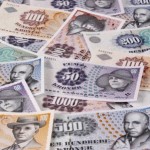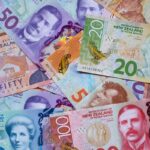Precious metals dropped earlier gains on Ukraine ahead of a testimony by Feds Chair Janet Yellen. A show of confidence is expected, pressuring gold and silver. Meanwhile, copper was losing, as negative industrial outlooks in China outweighed positive data from the US.
Gold futures due in June traded for $1 303.2 per troy ounce at 13:40 GMT on the COMEX in New York today, losing 0.41% to Tuesday’s closing price. Daily high and low stood at $1 315.0 and $1 301.4 per troy ounce. Yesterday the contract lost 0.05%, after on Monday the precious metal reached a three-week peak at $1 315.8, on news of bitter fighting in Ukraine.
Meanwhile, silver futures for July, the most traded silver contract in New York, stood at $19.515 per troy ounce, marking a 0.66% fall for the session so far. Prices ranged from $19.465 to $19.770 per troy ounce.
Feds Chair Janet Yellen will hold a testimony later today, and expectations are she will confirm official confidence in the economy. Last week the Federal Open Market Committee further reduced stimulus to the economy, betting on a strong recovery.
“Janet Yellens testimony… is the big event on the calendar today, and the market is positioning itself for [more] dovish comments,” Societe Generale said in a note.
Indeed, the US saw a number of reports boost positive sentiment for its economy recently. Earlier today, a preliminary report on labor costs, which are indicative of consumer inflation, posted results better than expected. The quarterly costs increase for the first three months of 2014 was put at 4.2%, up from -0.4% for Q4 of 2013. Yesterday, data on foreign trade for March revealed exports were at their second-highest level on record, with automobiles and aircraft sales leading the rally.
Previously, growing activities in the services sector were reported by the ISM’s non-manufacturing PMI for April, which stood at 55.2, well ahead of expectations. Earlier, ISM’s factory PMI also recorded a significant gain for April to stand at 54.9, exceeding the expected 54.3, meaning a faster pace of growth in the industrial sector. Last week’s employment figures, which recorded multi-year highs, alongside increasing consumer spending cemented positive outlooks in the world’s largest economy.
The recovering economy diverts investments away from the safety of gold and other commodities, and towards the higher risk-reward of equities, such as stocks.
Assets at the SPDR Gold Trust – the largest bullion-backed exchange traded fund, remained at the lowest point since January 2009 of 782.85 tons for the third day yesterday. The fund has lost 10 tons last week. The discouraging outflow suggests investor interest in the precious metal is at a multi-year low, as the world economy recovers.
Ukraine
The crisis in Ukraine has been generating safe-haven demand recently, helping gold and silver add more than 9% this year, while the conflict continues to deepen.
The Ukrainian government’s so-called “anti-terrorist” operation, taking place around the pro-Russian stronghold of Sloviansk, resulted in a bloody battle over the last few days. Kiev reported at least four government soldiers were killed and about 30 injured, and a helicopter downed, while at least 30 rebels were reported dead. The city remains in rebel hands, though blockaded by the military.
Earlier today, pro-Russian separatists in Donetsk have proclaimed a “People’s Republic” and are preparing an independence referendum on Sunday, the BBC reported. US Secretary of State John Kerry said the US reject the “illegal effort to further divide Ukraine.”
The town hall of Mariupol was captured by governments troops earlier today, only to be seized by separatists again later in the day. There confrontation seems to have moved to the police station. A reported 16 detainees, including the defense minister of the separatist Donetsk Peoples Republic, Igor Kakidzyanov. were brought there after city hall was captured by security forces earlier. A pro-Russian mob seeks to block their relocation, the BBC reported, and forces had fired warning shots in the air.
Elsewhere, Russian Foreign Minister Sergei Lavrov dismissed the possibility of more peace talks, if the format remained the same. He demanded the pro-Russian opposition in Ukraine have representatives, or else “…[the West, Kiev and Moscow] would just go round in circles.” He added that Ukraine should postpone the presidential election scheduled for May 25th, amid the escalating conflict.
Copper futures
On the COMEX division of the New York Mercantile Exchange, copper futures for settlement in July dropped 1.13% to trade at $3.0225 per pound at 13:41 GMT today. Prices shifted in a daily range between $3.0155 and $3.0620 a pound.
Copper continued to drop gains it made last Friday, after HSBC’s final reading for April’s manufacturing PMI of China put the figure at 48.1. The reading marked the fourth month in a row to register a contraction in factory activity. The figure is also behind the preliminary standing of 48.3, and below the government’s 50.3 index, which also fell short of expectations.
On Thursday, China’s National Bureau of Statistics will release April trade data, which may show a third straight monthly decline in exports, while imports are projected to have recovered from last month’s 11.3% plunge.
Traders have been calculating the probability of China launching a stimulus program to restore previous levels of growth in its economy. Improving credit accessibility and subsidizing industries would boost copper contracts, as right now credit is tight and physical supplies are lagging behind demand. Further still, the Chinese government has been buying huge amounts of bonded copper, as much as 500 000 tons, fueling massive infrastructure and housing projects.
Paring the bearish reports from China to some extent, last Friday the Labor Department reported that the US unemployment rate stood at 6.3% in April – the lowest since the very start of the financial crisis in Autumn 2008. Meanwhile, nonfarm payrolls jumped by 288 000 for the month of April, marking the highest rise since May 2010.
A separate report by the Commerce Department showed that factory orders in March edged up by 1.1%, compared to 1.5% in February. Albeit trailing expectations for a 1.4% jump, this was a second straight month of expansion following a 2.2% drop in the December-January period. Earlier, ISM’s manufacturing PMI also recorded a significant gain for April to stand at 54.9, exceeding the expected 54.3, meaning a faster pace of growth in the industrial sector.





